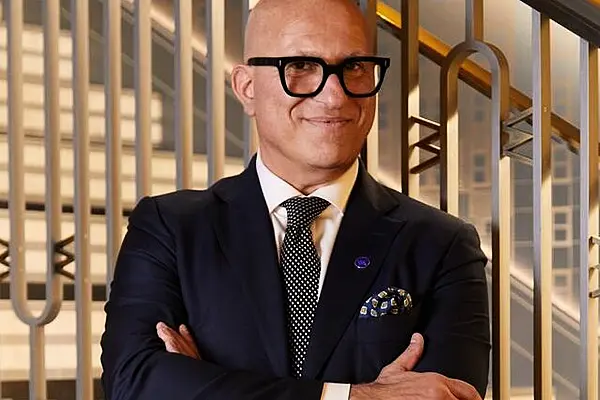Fans of Peruvian food like to tell this story: George Auguste Escoffier, the chef who wrote the rules of contemporary French cooking, once decided to rank the world's top cuisines. In his eyes, the best was, of course, French, followed by Chinese, and, in third place, Peruvian. Italian? Spanish? Not even mentioned. While Escoffier may or may not have created this ranking, it's a prophecy fulfilled: Lima, the capital of Peru, is currently the best place in the universe to get a sampling of the highest-ranking restaurant cooking.
The proof is mathematical, if you use the World’s 50 Best Restaurants as a guide. No city on its list has more than three restaurants in the top 50. The four that pose a triple treat are New York, London, Mexico City, and Lima. If you average the rankings of the three restaurants in each city, Lima has the best, lowest score - (15.6) - followed by New York (23.6), Mexico City (26.6), and London (28.3). Indeed, Lima beats New York by eight points (Note: Before the closing of Noma last week, Copenhagen had three 50 Best spots, too, at an average of 24.3).
Lima is on top because of these great restaurants: Central (No 4), Maido (No 13), and Astrid y Gastón (No 30). Each exemplifies different aspects of Peru’s diverse culture and culinary creativity. In the world economy of restaurants, they also represent a relative bargain: tasting menus at Central, Maido, and Astrid y Gastón range from $100 to $125. By comparison, dinner at New York’s Eleven Madison Park (No 3) starts at $295; and at the Ledbury (No 14) in London, it's $170.
Lima's traffic can be cantankerous, but if you're staying in the seaside Miraflores district, the restaurants are about a 20-minute stroll away. Otherwise, three of the best places to eat in the world are short cab rides from each other.
Astrid y Gastón
This is the haute cuisine spot that first put Peru in the top 50 rankings in 2011, thanks to chef-owner Gastón Acurio. He is a national hero in Peru who is beloved for La Mar, his international chain of cevicherias, and Acurio's name is seriously, and consistently, bandied about during every presidential election (Acurio denies that he will run for political office).
Ensconced in a gorgeous old mansion in the exclusive San Isidro district, the restaurant's menu focuses on the country’s long history of intermingling cultures - indigenous pre-Columbian traditions, Spanish, Italian, Chinese, Lebanese, Japanese, and various other immigrant influxes.
The tasting menu might begin with what Acurio calls a "messy love affair," assorted amuse-bouches such as sea bass-stuffed empanadas and crab macarons, presented in a serving dish in the shape of a rumpled bed. The dozen or so savoury courses that follow are a whimsical expedition through Lima's many migrant communities, including butter with a dollop of Andean honey; guinea pig prepared Peking-duck style; tempura egg with lobster; and, at the end, a mighty box of chocolates made with local herbs and such delicacies as coca leaf.
Maido
At Maido, chef Mitsuharu Tsumura (nickname, Micha) pays tribute to the country's diverse food scene via visually arresting, delicious nikkei cuisine. Created by Peru's Japanese immigrants, this cooking style is one of the prime reasons this restaurant catapulted up the worldwide rankings (31 points in one year).
You can sit at Maido's sushi bar and have excellent raw fish as well as à la carte selections ranging from ramen to Japanese hot rice dishes. But the tasting menu is key: Micha's 200 Miles menu is a reference to the country’s reach into the Pacific Ocean and the exceptional marine bounty courtesy of cold Humboldt currents, with schools of anchovies, sardines, and mackerel and larger fish, such as tuna. Micha’s creations have a distinctly Peruvian slant - he mixes cream and corn into his ceviche; fashions soba noodles from cassava; and tops sea urchin risotto with avocado and grilled baby corn. It's a gorgeous showcase of nikkei creativity; every cuisine might wish for an ambassador like Micha.
Central
This Miraflores-based destination is the brainchild of Virgilio Martínez Véliz, currently Peruvian cuisine's biggest food name and star of the new season of Netflix’s Chef’s Table. Its incredible centerpiece is a tasting menu arranged by the altitude at which local ingredients are produced—from sea level up 3,000 meters (10,000 feet) to the top of the Andes and back down to the Amazon on the other side of the mountains. The otherworldly dishes may include Andean potatoes redolent with intense muña mint and sprinkled with alpaca heart shavings (11,500 feet); forest "cotton," the fuzzy insides of the giant pacae bean (about 1,000 feet); and scallops transformed into a beautiful meringue-like crust served with super flavorful yellow rocoto peppers (sea level).
In the same way that elBulli's Ferran Adrià, noma's René Redezepi, and Dan Barber of Blue Hill Stone Barns have expanded their influence by adding a broader philosophical context to their cooking, Martínez - with the help of his sister Malena - has begun what may be an annual conference on concerns about the environment and Peru’s indigenous peoples. After all, the best dishes are food for thought.
News by Bloomberg, edited by Hospitality Ireland









